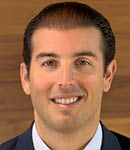While not bullet-proof to the struggles of the overall retail sector, open-air and neighborhood shopping centers haven’t faced the same immense struggles that enclosed malls have. Experts agree they’re a different animal, with a tenant mix that’s typically more e-commerce-resilient. Of course, they’ve been hit by bankruptcies like those of Kmart and Toys ‘R’ Us, which left big vacancies to backfill.
Such store closings, however, pose an opportunity to land stronger-performing tenants, says Ross Cooper, president/chief investment officer of Kimco Realty Corp.
The New Hyde Park, N.Y.-based REIT has also returned to its roots by pruning weaker properties and concentrating on the top 20 U.S. metro markets. Since 2010, Kimco has disposed of 472 non-core assets and assets it deemed as having too high of a risk profile for approximately $5.4 billion (Kimco’s share totaled $3.9 billion). Cooper says the sales provided a source of capital to fund the REIT’s extensive development/redevelopment pipeline, including adding mixed-use elements to existing properties.
Now it’s scaling back on dispositions to focus on those development/redevelopment projects.
Kimco now owns interests in 428 U.S. shopping centers totaling 75 million sq. ft. Its portfolio occupancy is at 96.4 percent— an all-time high for the REIT.
NREI spoke with Cooper about the state of the U.S. retail market and Kimco’s strategies. The Q&A has been edited and condensed for clarity.

NREI: What are the biggest challenges that open-air shopping centers face today?
Ross Cooper: The biggest challenges are a combination of a lack of investment by certain owners and landlords, as well as some of the assets in the marketplace being too [commodity-focused.] It really is critical in today’s retail environment to invest in the centers in both the aesthetics and tenant mix.
When you look at Kimco’s strategy, we’ve spent significant capital on landscaping, lighting initiatives and other amenities, as well as creating a vibrant tenant mix. The anchors of yesterday are not necessarily the same anchors of today, and it’s not always easy or quick to upgrade tenancy. But we’ve focused on bringing in vibrant, traffic-generating retailers, such as grocers, entertainment, restaurants, fitness and off-price [operators] with their treasure-hunt concept to really invigorate the assets.
NREI: How have anchors and retailers changed over the past several years?
Ross Cooper: As I mentioned before about commodity, the retailers that have products that can be easily acquired online and don’t offer a reason to actually go and touch and feel the product are struggling in today’s environment. Experiential is not just theaters and bowling alleys. It’s the treasure hunt that the off-price TJX concepts and Burlington offer, and the supermarkets that provide organic and prepared foods. It’s the restaurants that have continued to expand their offerings and the fitness people that are very focused on health and wellness. It’s all of the above.
NREI: What has been the impact of retail bankruptcies and store closures on Kimco’s portfolio?
Ross Cooper: The real benefit that we have at Kimco is our tenant base is majorly diversified. The number one tenant in our portfolio is the TJX concepts and they’re under 4 percent of our rent. The second-largest tenant in our portfolio is Home Depot, with just over 2 percent of rent. When you get to the 14th largest tenant in our portfolio, nobody has more than 1 percent of exposure of rent, so that has given us the opportunity to enhance the portfolio when we do get boxes back.
Our anchor spaces are over 98 percent leased. A periodic amount of vacancy, in many cases, can actually be a real opportunity for us to bring in one of those better retailers and both upgrade the tenancy from a quality standpoint, as well as the rent that we’re able to collect. There’s always going to be churn, an evolution in retail. There are always going to be tenants that come and go, but it’s having the right locations and the right spaces that provide an opportunity to upgrade.
NREI: Do you think that the worst of the retail bankruptcies and closures are over?
Ross Cooper: I think there’s going to continue to be closures and that evolution of retail is going to continue. Those retailers that have the financial wherewithal to invest in their business will continue to excel. It’s really critical for those that have been able to invest not only in online, but also in bricks-and- mortar. It’s very difficult to be successful as a retailer without having both channels for your customer to shop and experience.
NREI: Following a period of heavy disposition over the past several years, why has Kimco’s disposition activity slowed in 2019?
Ross Cooper: We did over $1 billion in dispositions in 2018 and plan to sell about $300 million this year. We’re extremely excited with the portfolio transformation, and it’s not just over the last couple of years. It has really been almost a decade that we’ve focused our efforts on cultivating the portfolio and the geographical locations that we want to be in, so really the top 20 MSAs.
We don’t believe that we need to majorly dispose in the portfolio that we have today. We’ll continue to prune the bottom percentage every year as an asset management function, because that’s a prudent thing to do as a landlord. But when you look at the performance of our current portfolio—our occupancy levels, our ability to continue to push rents—we’re very confident in the portfolio, so the major dispositions are definitely behind us.
NREI: How do you create value from your development/redevelopment pipeline, and how are you mixing retail, apartments, hotels and office uses?
Ross Cooper: It goes back to the portfolio transformation, first and foremost. We have locations where people want to be. They don’t want to just shop there. They want to work there and live there and stay there, so where appropriate, we’ve been able to look to create a mix of uses at vibrant destinations. When we look at opportunities in our portfolio, the retail truly is an amenity that drives all of those other uses. We believe that our real estate lends itself to adding other uses that actually can drive a premium to the rents that an apartment renter is willing to pay, or an office tenant is willing to pay, because they have the restaurants, theaters and other retailers at their doorstep, which is a real bonus.
We’ve taken a deep dive into our portfolio and spent a significant amount of human capital entitling as many of the properties that we believe lend themselves to this additional density, and then we make the determination based upon our cost of capital, the submarket and the supply-and-demand dynamics within that marketplace: Do we want to self-develop non-retail and put a significant amount of Kimco capital into the project? Do we want to bring on a joint-venture partner that has the expertise in non-retail? Do we want to ground lease a portion of the property, and essentially, rent the dirt to a non-retail developer?
Or do we want to take the entitlements that we’ve gotten and the value we’ve created on the dirt and sell off that component for non-retail uses, while still getting the benefit for our retail, but take a risk-off approach to that asset? That’s the decision-making we go through on every asset.
NREI: How many projects are underway?
Ross Cooper: We have over 4,500 multifamily units entitled to accommodate these projects. We have a couple dozen projects in various forms of design or entitlement, and we’re looking at a prioritization of those projects over a 10-year period. We’ll continue to be very methodical with our approach. The spend is anticipated to be somewhere in that $200 million to $250 million range from Kimco capital in the program on an annual basis.
NREI: A big part of Kimco’s portfolio is grocery-anchored centers. What’s your outlook on their performance?
Ross Cooper: The strong, well-capitalized grocers continue to offer consumers a product that’s very exciting, where you can order online and pick up in store. You can obviously continue to go to the store in the traditional way. Grocery creates a significant amount of traffic and the center’s co-tenants really benefit from that.
When you look at the grocery landscape today, we break it down into three categories: traditional grocers, specialty grocers and discounters. If you have the best operators in any of those three categories, then chances are you’re going to be in a very strong position within the marketplace. We believe we’ll continue to see further consolidation in grocery, because it’s a very razor-thin margin business. It’s expensive to invest in technology and the delivery and the things that consumers demand. The best of the best will continue to be successful, while those that are having a tougher time competing will either be acquired or ultimately disappear.
NREI: What does the future of retail look like to you?
Ross Cooper: We see the future being extremely exciting; it’s a continued evolution. We’ve talked a bit about retail Darwinism and we believe that the strong, well-capitalized retailers that are investing in their business and products will continue to attract customers by many different channels—in-store, buy online and pick up in store, or delivery distribution out of the store.
There’s a significant amount of retail that was built in this country over the last several decades and some of it will be obsolete and disappear. But we believe that we’ve created a portfolio of assets that were built not only to withstand the changes, but also continue to grow and improve over time.

